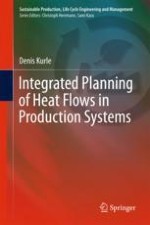2018 | OriginalPaper | Buchkapitel
4. Concept for an Integrated Planning of Heat Flows in Production Systems
verfasst von : Denis Kurle
Erschienen in: Integrated Planning of Heat Flows in Production Systems
Aktivieren Sie unsere intelligente Suche, um passende Fachinhalte oder Patente zu finden.
Wählen Sie Textabschnitte aus um mit Künstlicher Intelligenz passenden Patente zu finden. powered by
Markieren Sie Textabschnitte, um KI-gestützt weitere passende Inhalte zu finden. powered by

 MC.
MC.